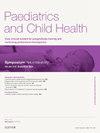儿科临床实践点超声:今天改变明天
Q3 Medicine
引用次数: 0
摘要
即时超声(POCUS)已成为临床医生的宝贵工具。它最好被视为临床评估的延伸,它可以提供比传统体检更多的信息。POCUS在临床儿科中扮演着几个角色;最常见的是作为诊断辅助,通过排除不太可能的诊断或帮助提高确认其他诊断的确定性,帮助临床医生进一步提出工作假设。它的使用可以避免其他调查,如血液检查的需要,这样做可以简化病人的旅程。在某些情况下,POCUS可以完成传统成像调查的作用。它已经成为指导严重不适患者复苏和稳定的工具,正如人们最熟悉的那样,它可以用来帮助指导手术过程。本文的目的是总结目前POCUS在急性儿科护理中的应用,并强调更多新颖的,新兴的应用。本文章由计算机程序翻译,如有差异,请以英文原文为准。
Point-of-care ultrasound in paediatric clinical practice: transforming tomorrow today
Point-of-care ultrasound (POCUS) has emerged as a valuable tool for clinicians. It is best considered as an extension of the clinical assessment, where it can provide greater information than is available via traditional physical examination alone. POCUS fulfils several roles within clinical paediatrics; most commonly it serves as a diagnostic aid, helping to further a clinician's working hypothesis by excluding less likely diagnoses or helping to improve certainty in confirming others. Its use can obviate the need for other investigations such as blood tests and in doing so it can streamline the patient journey. In certain scenarios POCUS can fulfil the role that a conventional imaging investigation has done previously. It has emerged as a tool to guide resuscitation and stabilization of the seriously unwell patient and, as is perhaps most familiar, it can be used to help guide procedures. The aim of this article is to summarize the current applications of POCUS in acute paediatric care as well as to highlight more novel, emerging applications.
求助全文
通过发布文献求助,成功后即可免费获取论文全文。
去求助
来源期刊

Paediatrics and Child Health (United Kingdom)
Medicine-Pediatrics, Perinatology and Child Health
CiteScore
1.20
自引率
0.00%
发文量
70
 求助内容:
求助内容: 应助结果提醒方式:
应助结果提醒方式:


